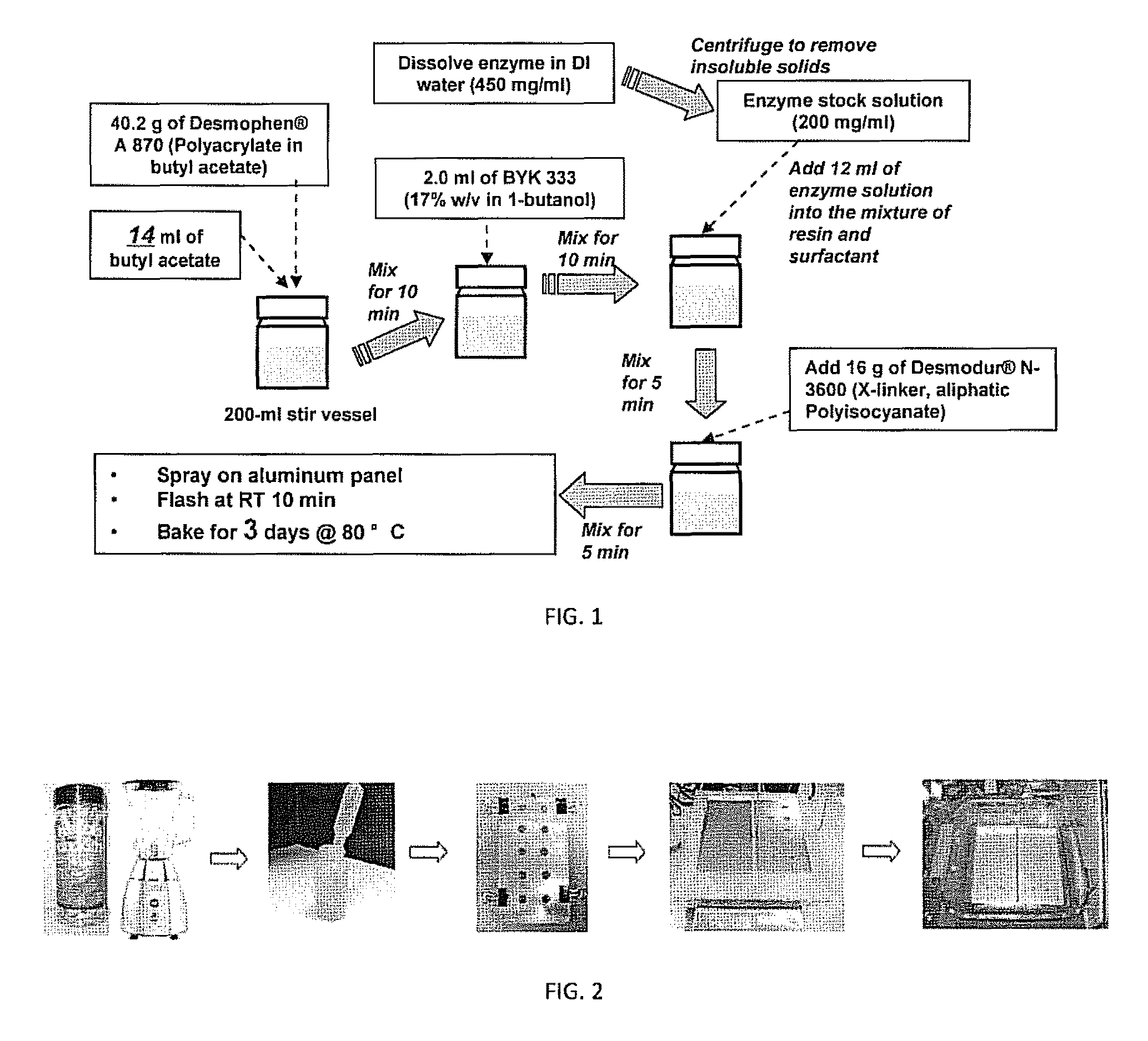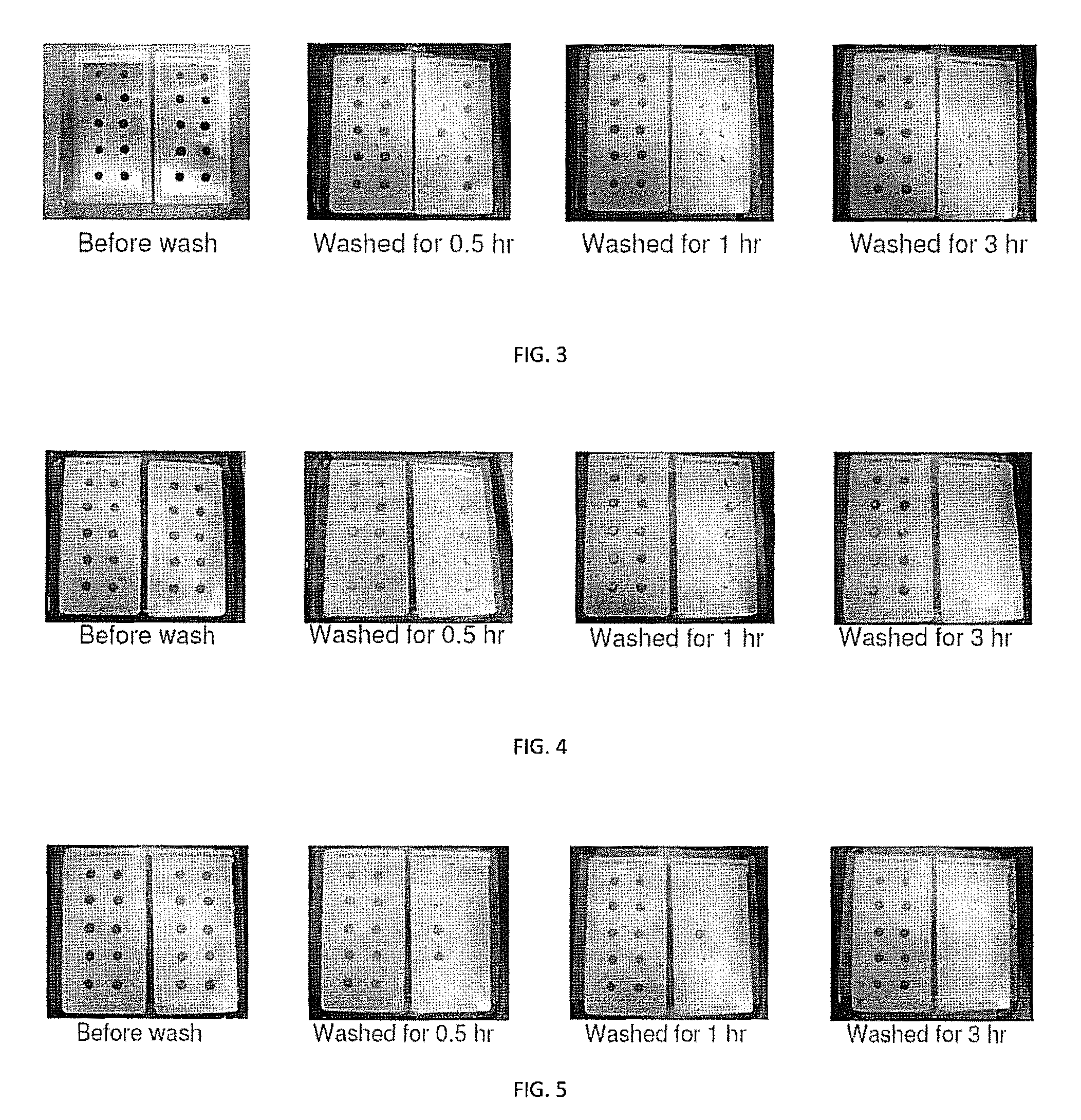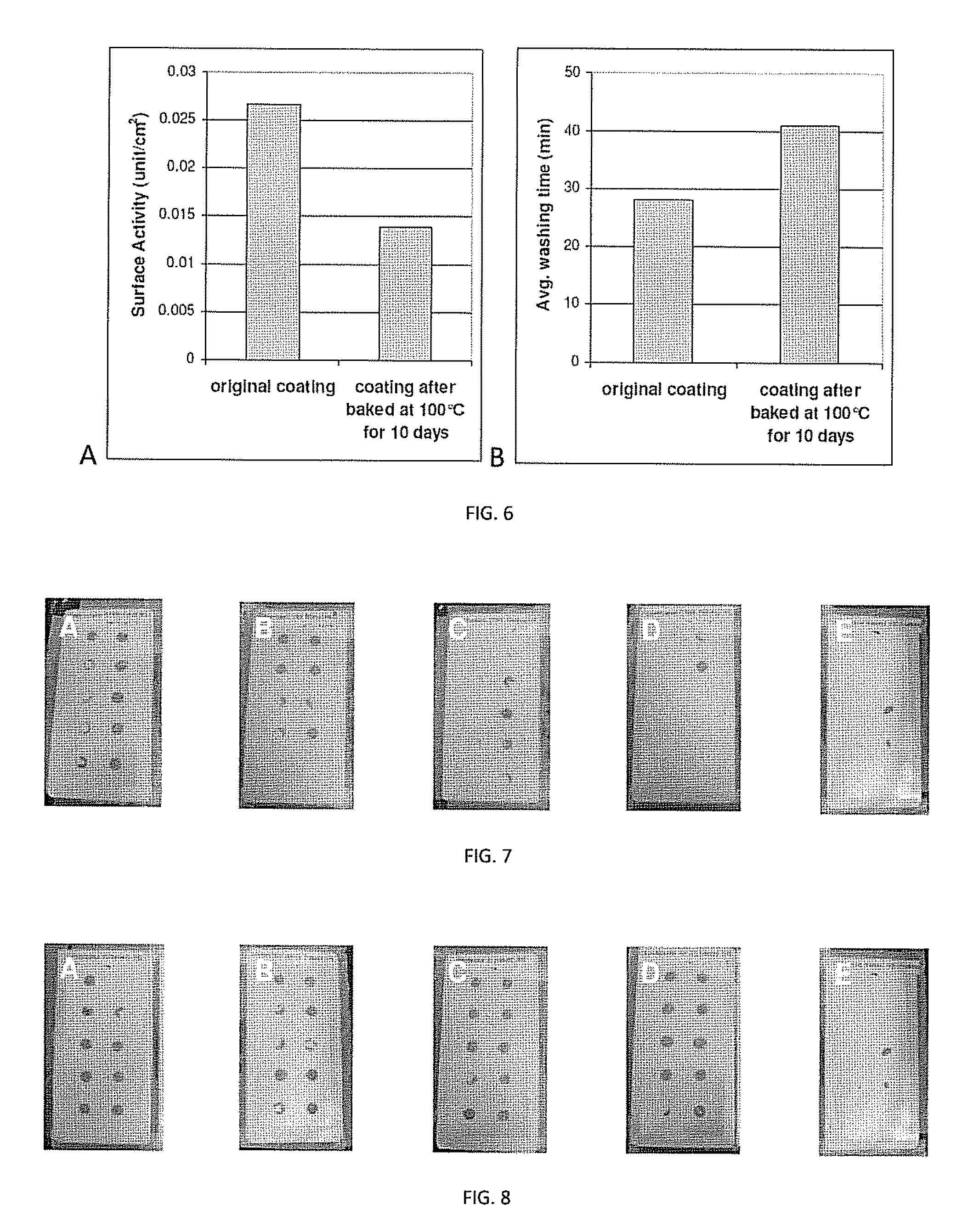Clearcoat containing thermolysin-like protease from Bacillus stearothermophilus for cleaning of insect body stains
a technology of thermolysin-like protease and clearcoat, which is applied in the direction of detergent compounding agent, inorganic non-surface active detergent composition, on/in inorganic carrier, etc., can solve the problem of unpleasant surface marks deteriorating the appearance of products, and the cleaning of insect body stains is less effective than from biological sources
- Summary
- Abstract
- Description
- Claims
- Application Information
AI Technical Summary
Benefits of technology
Problems solved by technology
Method used
Image
Examples
example 1
[0078]Production of a bacterial neutral protease from Bacillus stearothermophilus containing material operable for coating a substrate.
[0079]Materials: Freeze-dried crickets are purchased from PetSmart. Cricket bodies reportedly contain 58.3% protein. (D. Wang, et al., Entomologic Sinica, 2004; 11:275-283, incorporated herein by reference.) α-Amylase, Lipase PS, Protease N, Protease A, Protin SD AY-10, B. stearothermophilus TLP (Thermoase C160), and Thermoase GL30 (low activity preparation of B. stearothermophilus TLP) are obtained from AMANO Enzyme Inc. (Nagoya, JAPAN). Polyacrylate resin Desmophen A870 BA, and the hexamethylene diisocyanate (HDI) based polyfunctional aliphatic polyisocyanate resin Desmodur N 3600 are obtained from Bayer Corp. (Pittsburgh, Pa.). The surfactant BYK-333 is obtained from BYK-Chemie (Wallingford, Conn.). 1-butanol and 1-butyl acetate are obtained from Sigma-Aldrich Co. (Missouri, USA). Aluminum paint testing panels are purchased from Q-Lab Co. (Clevela...
example 2
[0083]Preparation of biological stains and application to coated substrate. An exemplary schematic of an experimental procedure is provided in FIG. 2. 60 g of Freeze-dried crickets are chopped into powder by a blender (Oster, 600 watt) for 10 min. The stain solution is prepared by vigorously mixing 2 g of cricket powder with 6 mL of DI water. A template of uniform spacing is used to apply the stain on the coating surface. The cricket stains are dried at 40° C. for 5 min followed by placing the coating panels into a glass dish and rinsing with 200 mL of DI water under 300 rpm shaking at RT for various times. The time of the stain removal is recorded. In order to reduce random error, the time of the first and last drop removed are not included. The average rinsing time of eight stain spots is averaged for stain removal time.
example 3
[0084]Drying time affects stain removal time. Stained coated substrate panels prepared with coatings as in Example 1 and insect stains as in Example 2 are subjected to drying at 40° C. for various times. The rinsing time of stain drops strongly depends on the drying time. The control protease free coating, after being dried for 5 min, produces firmly adhered stain drops that are not removed by rinsing for 3 hr (Table 1).
[0085]
TABLE 1Drying Time (min)33.25Average washing time (min)2.84.9>180
[0086]For the B. stearothermophilus TLP containing coated panes, the rinsing time increases with longer drying time yet at equivalent drying times relative to control the protease containing coating promotes dramatically improved stain removal. (Table 2).
[0087]
TABLE 2Drying Time (min)510Average washing time (min)28.779.3
PUM
| Property | Measurement | Unit |
|---|---|---|
| diameters | aaaaa | aaaaa |
| diameter | aaaaa | aaaaa |
| diameter | aaaaa | aaaaa |
Abstract
Description
Claims
Application Information
 Login to View More
Login to View More - R&D
- Intellectual Property
- Life Sciences
- Materials
- Tech Scout
- Unparalleled Data Quality
- Higher Quality Content
- 60% Fewer Hallucinations
Browse by: Latest US Patents, China's latest patents, Technical Efficacy Thesaurus, Application Domain, Technology Topic, Popular Technical Reports.
© 2025 PatSnap. All rights reserved.Legal|Privacy policy|Modern Slavery Act Transparency Statement|Sitemap|About US| Contact US: help@patsnap.com



